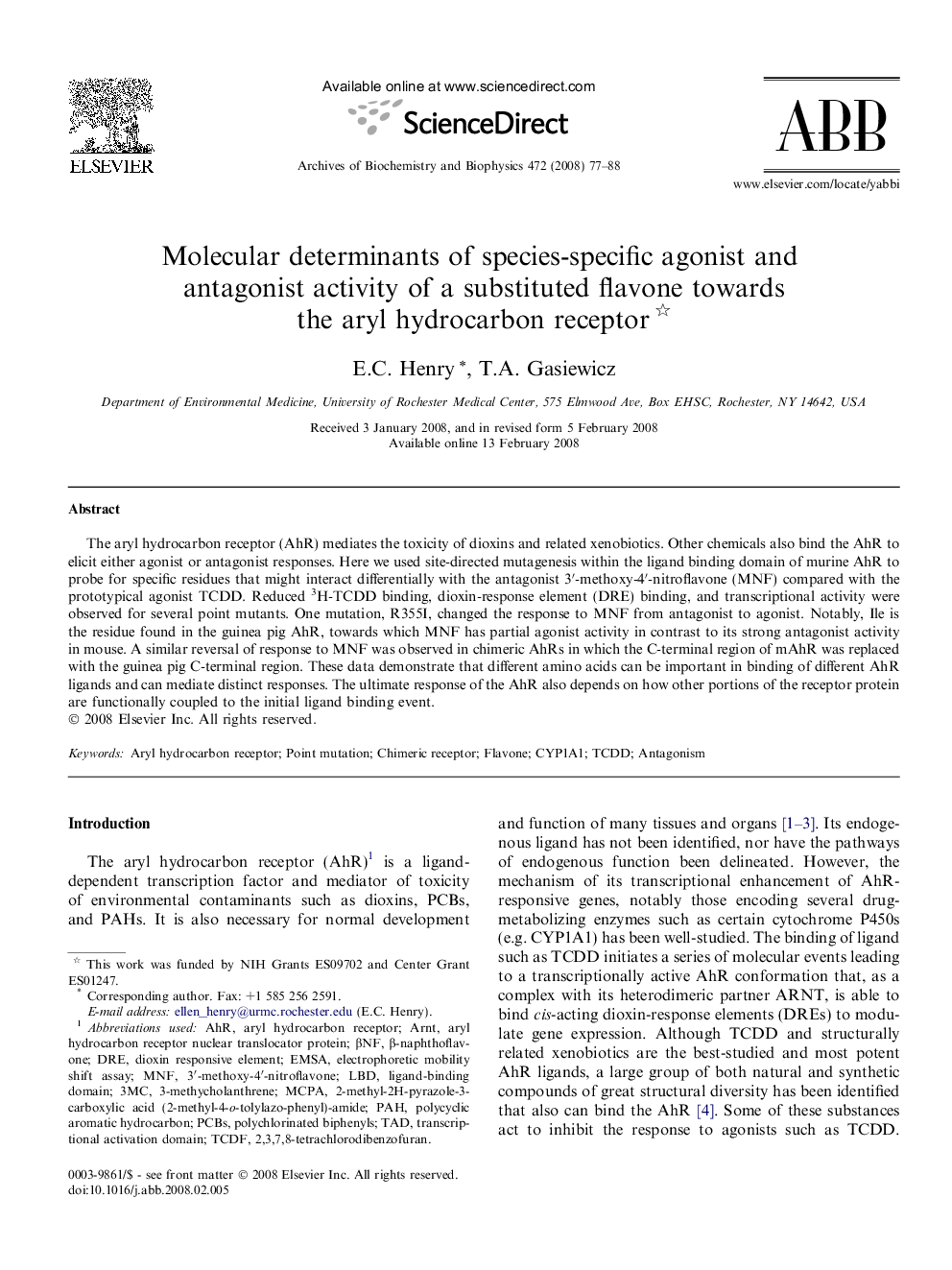| Article ID | Journal | Published Year | Pages | File Type |
|---|---|---|---|---|
| 1926798 | Archives of Biochemistry and Biophysics | 2008 | 12 Pages |
The aryl hydrocarbon receptor (AhR) mediates the toxicity of dioxins and related xenobiotics. Other chemicals also bind the AhR to elicit either agonist or antagonist responses. Here we used site-directed mutagenesis within the ligand binding domain of murine AhR to probe for specific residues that might interact differentially with the antagonist 3′-methoxy-4′-nitroflavone (MNF) compared with the prototypical agonist TCDD. Reduced 3H-TCDD binding, dioxin-response element (DRE) binding, and transcriptional activity were observed for several point mutants. One mutation, R355I, changed the response to MNF from antagonist to agonist. Notably, Ile is the residue found in the guinea pig AhR, towards which MNF has partial agonist activity in contrast to its strong antagonist activity in mouse. A similar reversal of response to MNF was observed in chimeric AhRs in which the C-terminal region of mAhR was replaced with the guinea pig C-terminal region. These data demonstrate that different amino acids can be important in binding of different AhR ligands and can mediate distinct responses. The ultimate response of the AhR also depends on how other portions of the receptor protein are functionally coupled to the initial ligand binding event.
